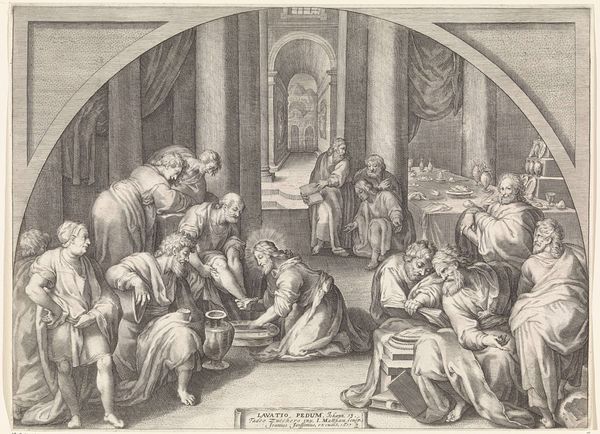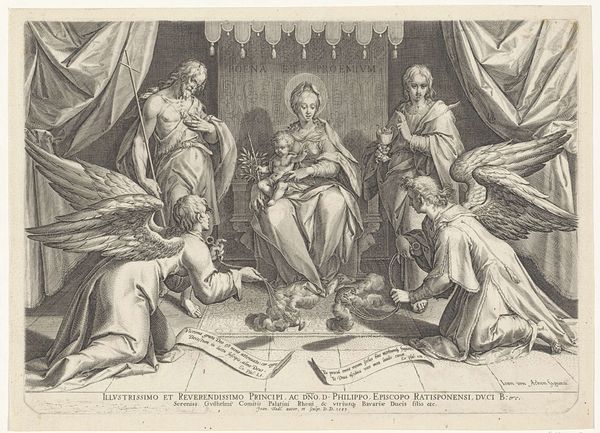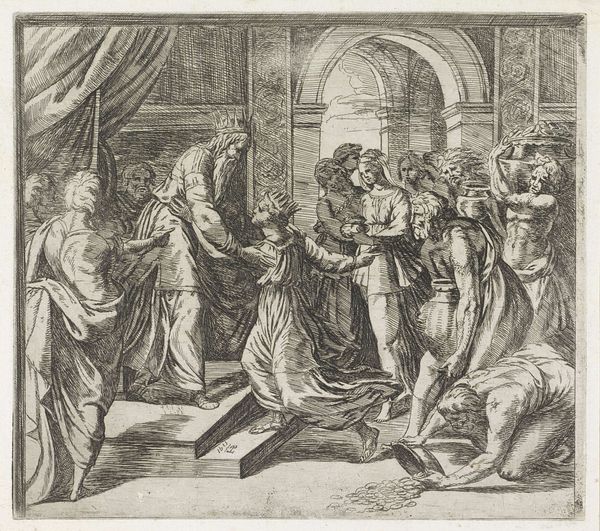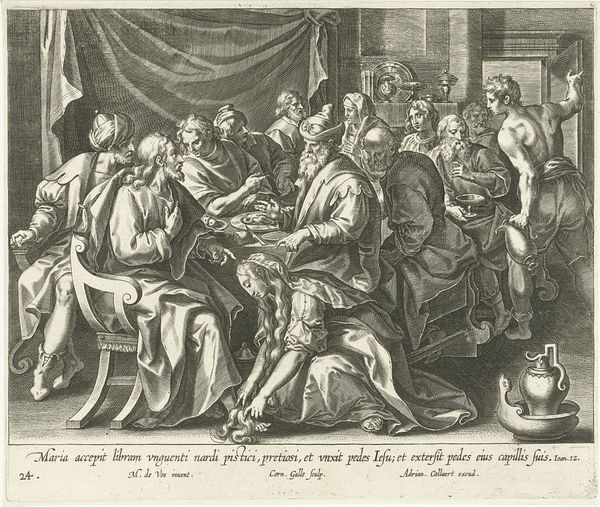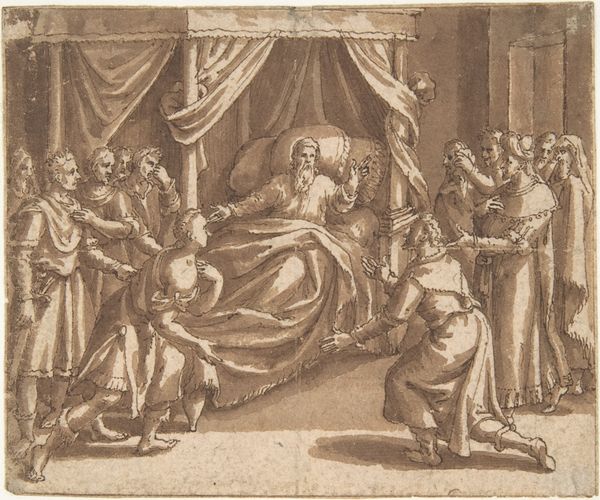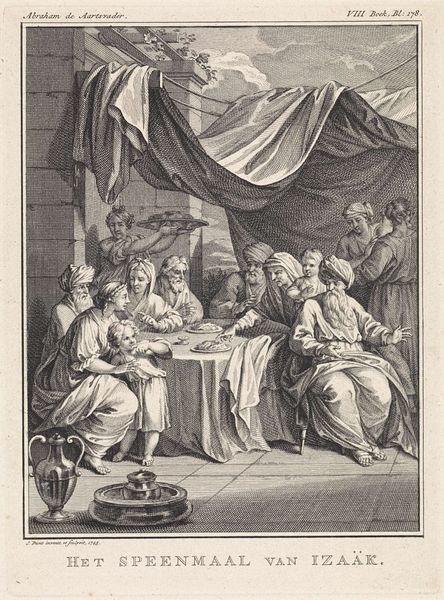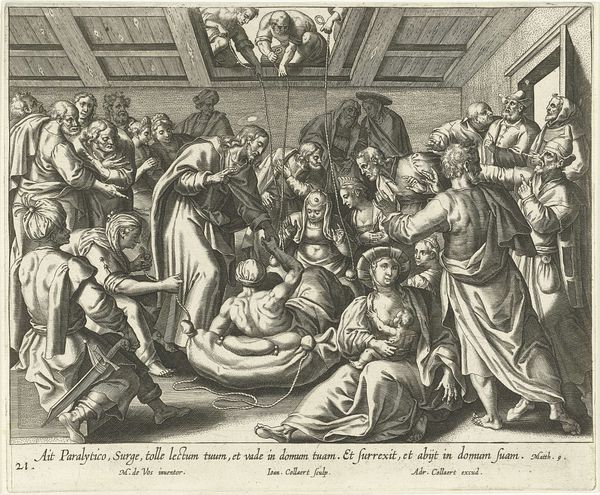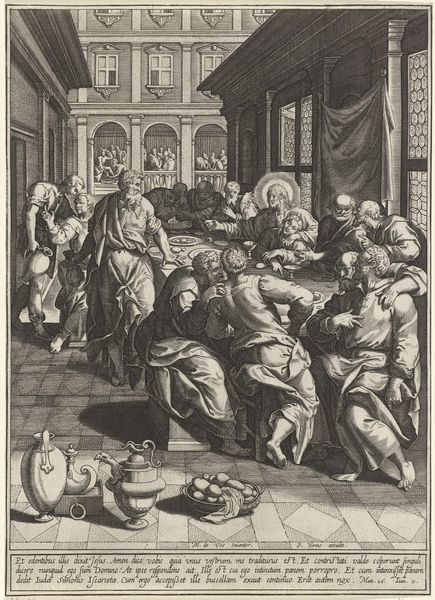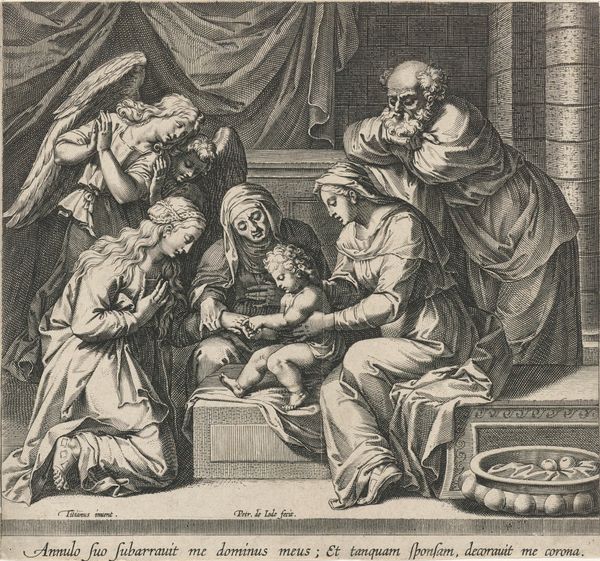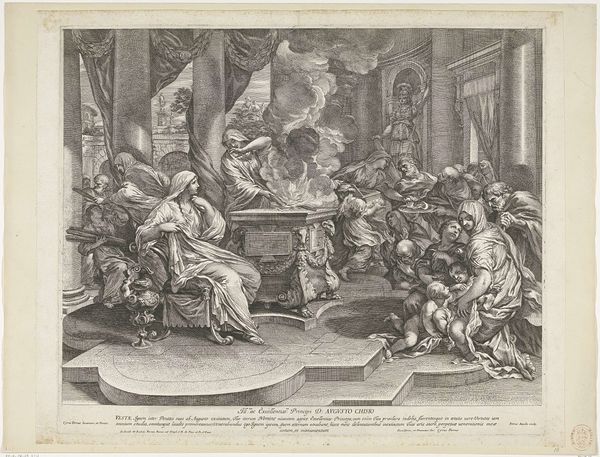
engraving
baroque
old engraving style
figuration
history-painting
engraving
Dimensions: height 436 mm, width 509 mm
Copyright: Rijks Museum: Open Domain
Editor: Here we have "Het sterfbed van Maria," or "The Deathbed of Mary," an engraving by Pietro Aquila dating sometime between 1660 and 1692. The scene feels very dramatic, with a lot of figures and strong directional lines. What's striking to you about it? Curator: Considering the period, and Aquila’s role as a printmaker reproducing works, I think it’s key to view this not just as an isolated image but as a visual artifact embedded in 17th-century religious and political currents. How would an image like this, disseminated through prints, function in shaping popular piety and bolstering the Church’s authority? Notice the inscription at the bottom – "Dedicated to Cardinal Cybo..." Editor: So it's partly a propaganda piece? Curator: "Propaganda" may be too strong a word, but it's undoubtedly a form of visual rhetoric. Think about it – the baroque style itself, with its theatricality and emotional intensity, was very much embraced by the Counter-Reformation. Now, given that this was for Cardinal Cybo, do you see how the composition reflects the values of those circles? The engraving promotes both religious devotion and a specific, hierarchical social order with the Church at its apex. Editor: I hadn’t considered the political implications so directly, but it makes sense. It's less about pure artistic expression and more about visually reinforcing power structures. Curator: Precisely. What new thoughts about historical contexts does this highlight? Editor: This has given me an appreciation for art's role in shaping historical perspectives. I'm also taking away that it's critical to see beyond surface appearances and investigate underlying messages!
Comments
No comments
Be the first to comment and join the conversation on the ultimate creative platform.
